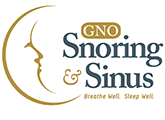What is a balloon sinuplasty and how can it help your chronic sinus issues? This type of recurrent, long-term infection impacts more than 14 percent of Americans, according to research in the journal Case Reports in Emergency Medicine. If you’re one of the many people with this common chronic condition, take a look at what you need to know about a balloon sinuplasty treatment.
How Does a Balloon Sinuplasty Treat Chronic Sinusitis?
This surgical procedure helps to dilate the sinuses and allows them to drain. An ENT surgeon will use, as the name implies, a small balloon to open and enlarge the sinus cavity. This can help to stop constant or repeat sinus infections and may make symptoms such as a chronic stuffy nose, congestion, runny nose, facial pressure, or loss of smell resolve.
Why Choose a Surgical Option Over a Medical Approach?
There isn’t one way to treat all sinus issues. A balloon sinuplasty isn’t the best option for someone who is having their first sinus infection or only has sinus issues once in a while. Prescription medication, such as antibiotics, and some types of over-the-counter medications are often a first-line defense against this type of infection.
Americans spend a collective $150 million on prescription medications and $1 billion on over-the-counter (OTC) medications annually to treat sinus infections, according to the American College of Allergy, Asthma, and Immunology. These treatments include antibiotics, nasal decongestant sprays, antihistamines, nasal saline washes, and nasal corticosteroids.
If medications don’t work to treat a sinus infection or you have recurrent issues that prescription or OTC drugs won’t help to fight, your ENT may recommend a surgical approach (balloon sinuplasty). Unlike medical treatments, a sinuplasty is a permanent option that can prevent repeat problems or chronic symptoms.
Does a Balloon Sinuplasty Hurt?
You shouldn’t feel anything during this surgical procedure. Like other types of surgery, a balloon sinuplasty is typically done under sedation. You will go into an operating room or a procedure room in the doctor’s office or medical center for the surgery. Before the surgeon begins, an anesthesiologist will give you medication to make you relax and rest through the procedure.
Some patients may not need anesthesia for this procedure. If you won’t need sedation to sleep through the sinuplasty, the surgeon will use topical or local anesthetics to numb the area before the procedure. This is done with an anesthetic spray and a local anesthetic injection. The anesthetic will numb your nose and sinus areas for the sinuplasty—but you will not sleep through the surgery.
What Is Recovery Like for a Balloon Sinuplasty?
Sedation, general anesthesia, or medication that relaxes you for the surgery will make you tired, groggy, or even confused after the procedure ends. If you have anesthesia, you may need to stay in the hospital, medical center, or doctor’s office until you are awake and alert. Even though you will wait to leave, you can’t drive yourself home or drive the day of your procedure.
If the doctor only uses a local anesthetic, you may not have driving restrictions. But you may feel uncomfortable after the procedure and want someone else (such as an adult family member or friend) to drive you home. Plan to take at least the day of the procedure off from work or school to rest at home.
Some patients experience discomfort in the procedure area after the anesthesia or anesthetic wears off. Talk to your doctor about what OTC medications are best to relieve post-op pain.
Do you have chronic sinus infections? Do you want to learn more about your treatment options? Contact GNO Snoring & Sinus for more information.

